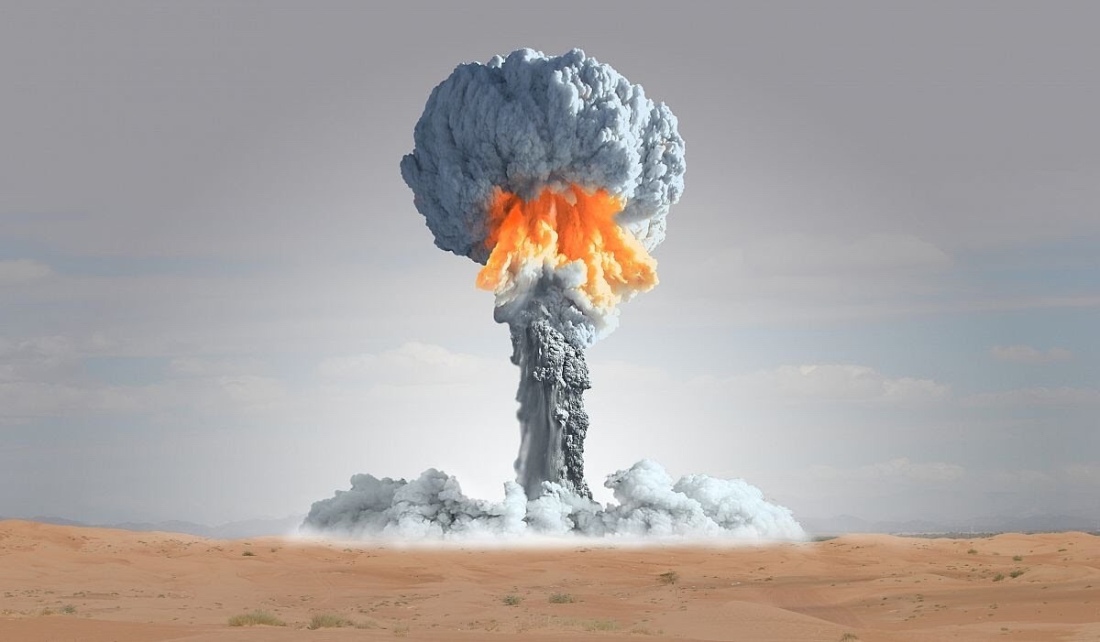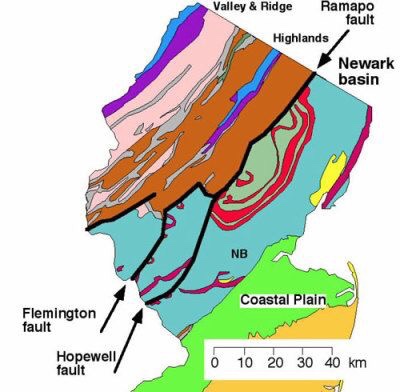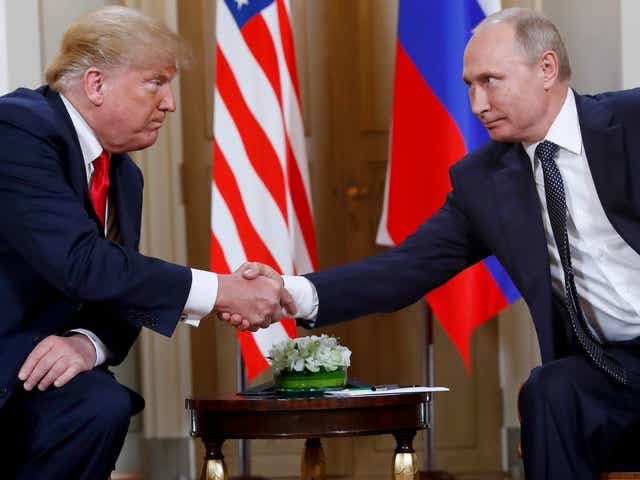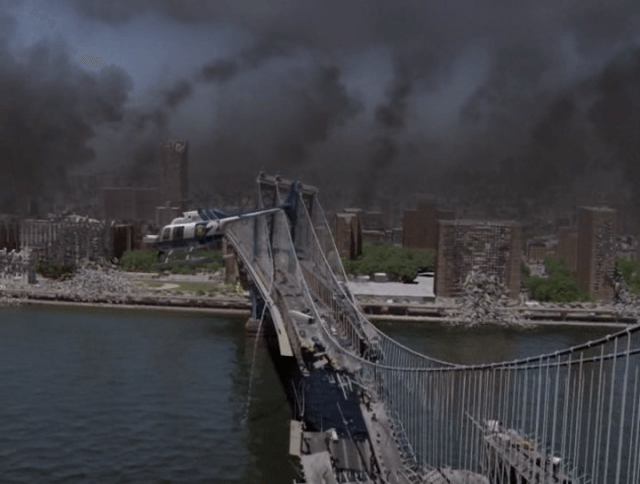The Washington Post has reported that the Trump administration discussed conducting the first U.S. nuclear test explosion since 1992. Experts say this is a bad way to make a political point. By Matthew Gault May 29 2020, 6:00am
So you’re worried about dying in a nuclear war. Given recent world events, it’s a perfectly reasonable concern. Iran said on Sunday it would no longer abide by most of the restrictions on uranium enrichment and production as detailed in the Joint Comprehensive Plan of Action. Iran isn’t rushing towards developing a nuclear weapon, but it’s laying the groundwork to make it easier if wanted to.
In June, the Pentagon accidentally published its plan for fighting a nuclear war. In early August, the US officially pulled out of one of the most important anti-nuclear treaties in world history. In December, it tested a missile that could soar beyond the bounds laid out in that now defunct treaty. Days after Christmas, Russia deployed its hypersonic glide missiles—a new kind of reentry vehicle meant to deliver nuclear warheads past missile defense systems. Add to this the failing treaties and fire and fury rhetoric, and nuclear war now seems like a real possibility—but so does surviving it.
Today’s nuclear weapons are devastating nightmares, but people can and do survive even when they are close to the bomb’s blast radius. Japanese man Tsutomu Yamaguchi lived through the bombings of both Hiroshima and Nagasaki and died at the age of 93. Yamaguchi wasn’t the only person to survive both blasts, either, just the most famous. The horrific American bombings killed more than 200,000 people, but around 70 percent of each city’s population survived. Many lived with severe complications related to the bombing, but they lived.
To find out exactly how one might survive a nuclear explosion today, we called up Alex Wellerstein, Brooke Buddemeier, and Eliot Calhoun. Wellerstin is a professor at Stevens Institute of Technology and the creator of the Nukemap, a website that lets people see the effects of nuclear bombs in their area; Buddemeier is a radiation safety specialist in the Global Security directorate of Lawrence Livermore National Laboratory; Calhoun is the Chemical, Biological, Radiological, Nuclear, and Explosions Planner at New York City’s Office of Emergency Management.
How people survive a nuclear blast
A nuclear blast comes in six stages. There’s a flash of light, a wave of heat, a release of nuclear radiation, a fireball, a blast of air, and finally the radioactive fallout.
This all happens very quickly—within just a few seconds—but modern early warning systems will likely give you some time to react. In January 2018, for example, the state of Hawaii warned residents that a ballistic missile was inbound. It was a false alarm, but state officials estimated that, had it been a real missile, the amount of time from warning to impact would have likely been 12 minutes.
According to Buddemeier, the blast zone of a nuclear explosion breaks down into three areas: the severe damage zone, the moderate damage zone, and the light damage zone. If you’re in the severe damage zone (the area consumed by the fireball) your chances of surviving are low, but you may live through it if you have the right shelter.
“People did survive in Hiroshima and Nagasaki in that zone,” Buddemeier said. “And they weren’t in any kind of bunker, they just happened to be in a strong concrete building. One woman survived in a bank just 300 meters from the epicenter. Not in the vault, just the bank.”
But around the edges of the blast, in the moderate and light damage zones, there is even more room for survival. Your first instinct might be to hit the road, but according to Wellerstein, that could be a deadly mistake.
Atomic Bomb Dome in Hiroshima city in Japan. Image: Getty Images
According to Wellerstein, no matter which damage zone you’re in, the safest place to be during a nuclear blast is in a large, secure building.
“If you do have some warning, find the nearest large, commercial, well-built building. If it’s got a basement, go in there. If it doesn’t, move to the center of the building,” he said. “Sit tight. Nothing is guaranteed, and you don’t know where the weapon will likely go off, but these kinds of structures do much better against blast, heat, and radiation than anything else.”
Calhoun said the most important thing to do was to “Get inside and stay inside.” That’s the core message NYC’s Office of Emergency Management wanted to stress. Calhoun said it didn’t matter if the explosion came from a small suitcase detonated by a terrorist or an ICBM launched by a rival country, the message to the public was the same: “Get inside and stay inside.”
It’s also important to not to look at the bright flash of light emitted as the bomb detonates; it will blind anyone looking at it. This blindness is temporary, only lasting for a few seconds or few minutes, but for that brief time it could make people more vulnerable to hazards such as rubble. During the day, the blinding effects of a nuclear flash can reach 10 miles from the blast zone. At night, those effects extend even farther.
A building could become dicey during the air blast that follows the fireball, however. “It’s like a wall of air coming through,” Buddemeier said. “Buildings will be blown apart.”
The air blast in the moderate damage zone will likely cause another wave of injuries even for those who sought shelter, but it will be worse for anyone who stayed outside or attempted to flee by car. Like a tornado or an earthquake, getting to a secure location in the middle of a building is safer than the alternative. After the air blast comes the radiation, and a building is also likely to provide the most protection.
The light damage zone is on the very fringes of the explosion. The airblast dissipates as it moves outwards, but it’s still dangerous on the fringes. “It’s more like a sonic boom or a thunderclap,” Buddemeier said. “There’s just enough force that it’s actually breaking windows and throwing glass across the room. It might pop the roof of a building.” This zone extends for miles outside the immediate blast radius, and should cause the least significant injuries.
“If you survive the initial blast, and the building isn’t too damaged to be an immediate threat—it’s not on fire, say—stay inside it,” Wellerstein said. “You won’t know where the contamination is outside, and for the first few days it could be dangerously high levels of radioactivity.”
How to survive after the bomb drops
Surviving the initial blast requires some luck even inside a building, but staying safe after the initial detonation requires patience.
“[The nuclear blast will] suck up thousands of pounds of dirt and debris, coat that dirt and debris with the fission products produced during the explosion, and after it stabilizes miles up in the air the heavier particles will come down. They will be radioactive,” Buddemeir said. “Protecting yourself from exposure to that is something you can do after the blast occurs.”
Around 15 minutes after the initial blast, this fallout will begin to move through the atmosphere and pepper the ground. “Being as far away from that material as possible is what’s going to change your outcomes,” Buddemeir said. “Get inside, stay inside, and stay tuned. If you can get into a basement, that’s even better.”
Being indoors during the blast will help, but if you are outside for any part of the detonation, it’s important to minimize the amount of fallout you absorb once you’re safe inside. The longer you’re in contact with radioactive material, the more it’ll eat away at your body. An early warning sign is nausea and vomiting. Under stronger doses of radiation, the body melts from the inside out. Lower doses will break down your DNA, eventually leading to cancers such as Leukemia and, eventually, death.
According to the US Department of Energy, your clothing will absorb a lot of fallout and simply getting rid of that clothing can go a long way towards keeping you safe. Strip, and, if you can, get those clothes into a plastic bag and get the bag as far away from you as possible. Then, take a shower with soap and water to remove the fallout from your body’s surface.
If you can’t shower, use the water from a sink or bottled water and a damp cloth to wipe down your skin with a focus on areas that were exposed outside. Do not use conditioner in your hair, however. The unique chemical properties in conditioner will bind radioactive material to your hair.
As for food, because you’ll need to eat even during Armageddon, packaged food and drink that was inside a building during the blast will likely be safe (or safe-ish) to eat. The US Government did extensive testing of the effects of nuclear blasts and fallout on packaged food, even nuking bottles of beer to see what would happen. Needless to say, avoid consuming anything that was outside during the attack.
The good thing about the gamma radiation from a nuclear blast is that it decays quickly. An hour after the blast, about 50 percent of the fallout will have already dissipated. According to both Wellerstein and Buddemeier, the fallout will have decayed by 80 percent after 24 hours. The longer you wait, the safer the outside will be.
Eventually, it will be time to leave your shelter and brave the irradiated world.
“After three days or so, [depending] on the size and number of the blasts, but three days is a good rule of thumb for single detonations of modern warhead sizes—the outside radiation will have likely subsided to a degree that you can flee the area without putting yourself too much at risk,” Wellerstein said. “Ideally you would wait for external information from emergency personnel before leaving, but depending on the scenario that might not be possible.”
The blast radius of a 5 megaton nuclear bomb hitting New York City. Nukemap
Calhoun agreed. “We recommend people wait 72 hours and have three to four days worth of food and water on hand at any given time,” he said.
If the blast hasn’t knocked out communications infrastructure, information will be key to survival from here on out, but it’s also likely to be difficult to parse truth from fiction.
In the aftermath of the false alarm in Hawaii, bad information spread across social media. In the event of an actual nuclear attack, Twitter, Facebook, and whichever other services or websites that remain online will be full of bad info, misinformation, and rumors shared in a panic. There’s also a good chance the blast will knock devices such as smartphones out of commission, and make the internet less accessible. A battery or crank-operated AM/FM radio will be your best bet for staying connected to the outside world.
When you’re huddled inside a building, cleaning radioactive fallout off your body, and trying to survive, it may be hard to take a deep breath and scrutinize the information that comes your way. But no matter how the info gets to you—either by radio, word of mouth, or the internet—the important thing will be to scrutinize it.
If you need some guidance, Sweden recently published a civil defense pamphlet that lists excellent questions to ask about information during a time of crisis: what’s the point of the information? What’s the source? Is the source known to be trustworthy? Can you verify the information with another source? Don’t believe unverified or unverified rumors and don’t spread them.
Nuclear war is one of the most terrifying threats the world has ever faced. It’s an existential threat to both civilization and life itself. Nuclear weapons are a big-picture political problem that—like climate change and the rise of fascism—require political solutions. Until then, you can prepare for the worst and hope it doesn’t happen.








 Trump thinks he can get Russia and China to agree on nuclear weapons? Not even close
Trump thinks he can get Russia and China to agree on nuclear weapons? Not even close Testing Nuclear Weapons Again Would Be a Terrible Idea
Testing Nuclear Weapons Again Would Be a Terrible Idea


